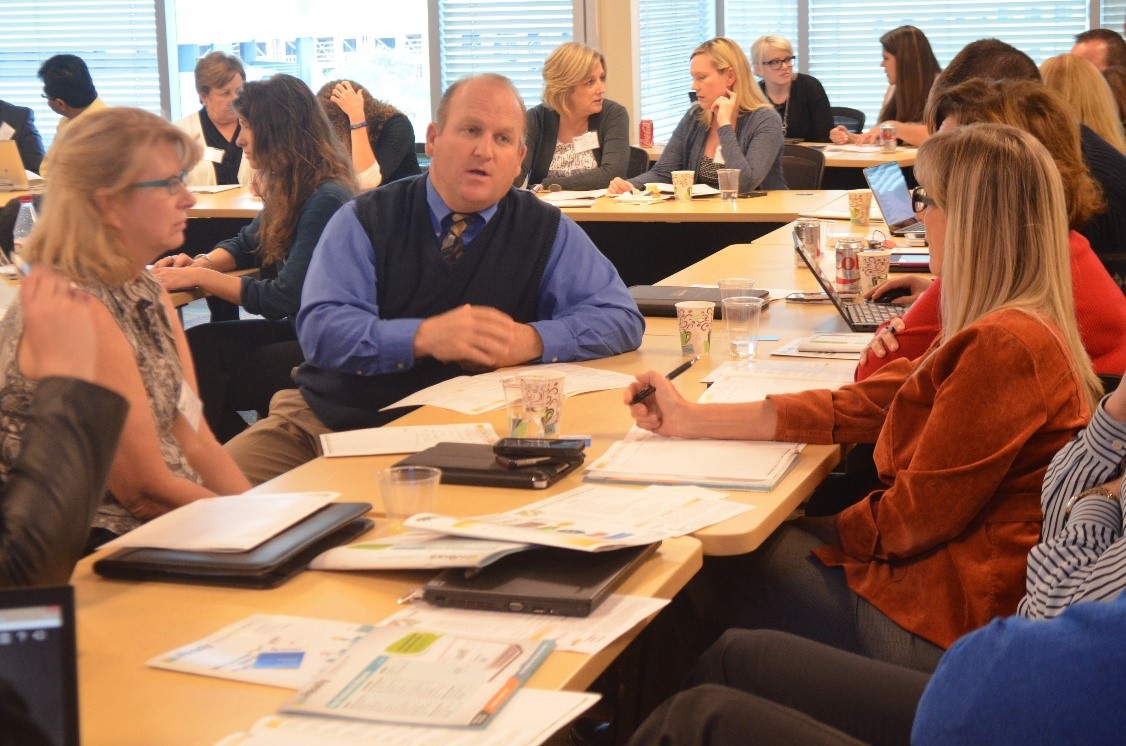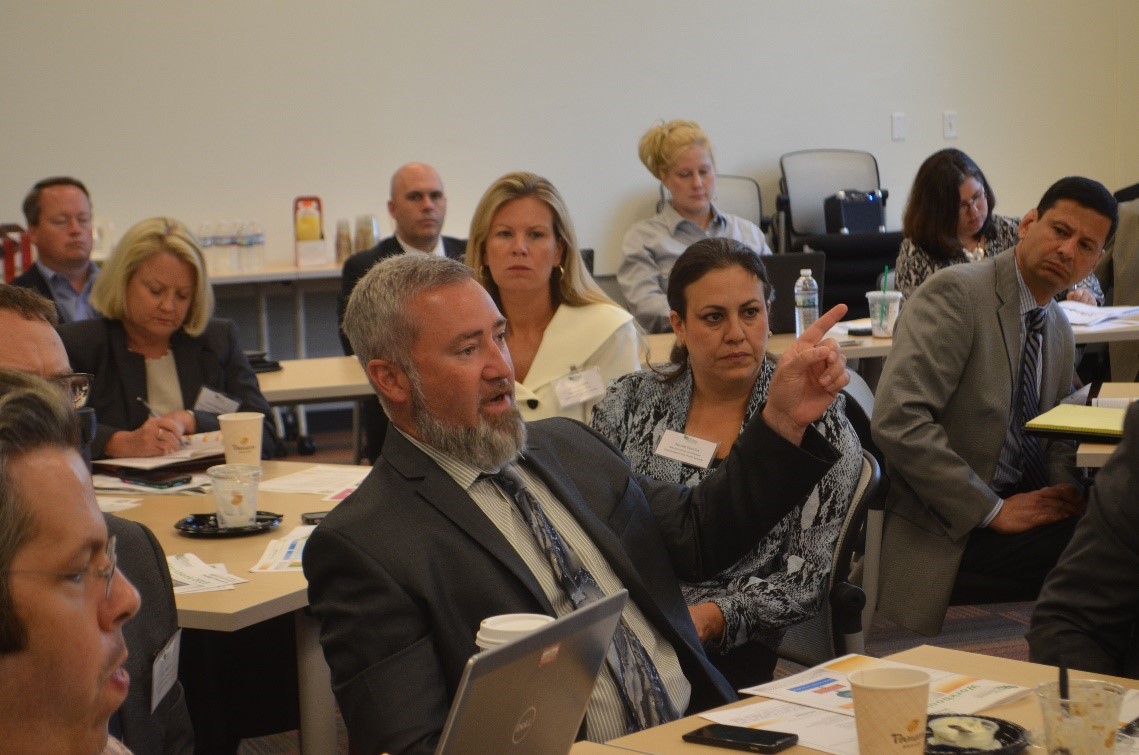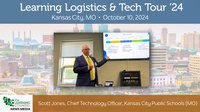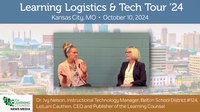After visiting 48 cities in the last year and a half, and talking with thousands of education executives from over 400 districts with schools representing millions of students, the Learning Counsel has gained an uncommon understanding of where the nation stands regards the shift in the way we teach and learn.
Dr. David Kafitz, Vice President for School Relations at the Learning Counsel, a former Superintendent and a transition specialist, stated, “We are truly in the eye-of-the-storm. Unfortunately, many schools and districts are implementing 1:1 initiatives with no, or at least an underdeveloped, strategy to truly make the shift.” He continued, “This is a billion dollar market and every district has huge responsibilities and massive pressures from parents and communities-at-large to deliver the best possible education. Equity in education is a very important consideration, and the expectation by most parents and students today is digital. If a school isn’t using devices and delivering digital curriculum for individualized learning, it’s generally considered that the leaders are holding children back.”
As any leader in the education arena can see, one of the biggest industry changes is on the business side—the industry has grown from an old-school cadre of major publishers to thousands of start-ups in a few short years. By survey, teachers are spending upwards of five hours a week sifting through all the different content available to fit the demands and changes in standards and testing. With over 7,000 companies and publishers now competing for a part of the edtech market individual teachers can’t hope to keep up with what is available, what’s working the best and what digital content they should use with their students.

“Having spoken with hundreds of education executives over the past several months, from every corner of the country, I’ve been able to filter through the ‘noise’ and confusion,” stated Dr. Kafitz. “I’ve made a point to summarize the underlying problems—or areas—that I see everyone in education having to solve in order to modernize their districts and schools. In fact, the Learning Counsel has mapped out the Characteristics of digital curriculum and is creating a community to address what is considered ‘high-value’ and ‘low-value’ with content out there.”
Dr. Kafitz also explained that there are five primary areas where executives need help and direction. These became the focus of digital curriculum strategy discussions and planning:
1. Teacher Professional Development: Necessary and critical on an ongoing basis, why? Given that publishers of curriculum and content, and developers of the various systems used in delivering the curriculum and content to students is iterative, gone are the stable cycles of 5 years or more of unchanging content. Now, typically, on an annual basis, new change is introduced into materials and systems that require ongoing professional development and support to remain knowledgeable of, and productive with, these materials and systems.
2. Equity of resources and access among students: This is commonly referred to as the “digital divide” and it must be bridged. Many districts are considering this variable when planning for providing devices to all students. There are some very creative and effective solutions put in place by districts and schools around the country. In partnership with communities, companies and carriers, providing access to the Internet is taking place on buses and in-and-around communities. More must be done by all to make sure everyone has connectivity and devices in their hands in urban, suburban and rural areas alike.
3. Developing real strategy for making the transition to digital curriculum and content based on instructional need and purposes: Learning needs should drive the introduction of digital curriculum and content into the learning process, not the provision of a device that may or may not add value to student learning. Examples of the “device first” approach are plentiful in the media. The outcome(s) of such an approach are negligible at best or disastrous at the worst.
Part of a district’s or school’s strategy developing process must include inventory and audit work around pedagogical practice and curriculum resources available. Alignment of pedagogy to curriculum and content resources allows for more meaningful and impactful professional development—it is all intertwined.
4. Understanding the new cycles of procurement in education curriculum and content: Gone are the days of one subject per year adopted for 5 or more years. With the transition to digital curriculum and content, the cycles of acquisition are now annual and all subjects can be in play at once. This means workloads of those education leaders charged with researching and vetting these resources have seen their to-do lists explode. Vetting digital curriculum and content is even more time intensive than print material because of the myriad of variables.

5. The perceived lessening value of the teacher, him or herself, in the classroom: The classroom will change, and educators perceive their services as less valuable in an environment where digital curriculum and content are delivered through sophisticated learning platforms. However, entrepreneurial school innovation models are actually pointing to the need for as many or more teachers in this brave new learning world. Why? Planning for instruction that is highly individualized and highly personalized takes greater planning than developing one lesson plan targeted to the middle 60 to 80 percent of students. The teachers’ new role as mentor, guide, facilitator, interventionist, etc., will require more time spent engaged in ingesting and utilizing the typhoon of data—for even greater student outcomes.
“Budget may seem like a key issue,” Dr. Kafitz added at the end of our interview, “and of course it is a fundamental consideration at executive level, but it isn’t really a problem when you can take a step back and look at your long term transition strategy. When you start down this transformation road, your budget model changes as well. This is one thing we delve into and work through at each city discussion meeting.”
The Learning Counsel’s Digital Curriculum Strategy Discussion event is a day-long meeting of local Superintendents, Chief Academic Officers, CIOs, Instructional Technologists, Principals, and others of general interest in the transition to digital curriculum, from regional districts and schools. The meeting entails actual curriculum as a central concern - the games, software, eBooks, subscriptions, apps, LMSs, SISs, testing/assessment and more.
The day of discussion also covers technology issues and important preferences like what device districts will use. Developing and establishing policies and strategies around how to really move to digital content and curriculum is a complex issue and has many points of possible failure. It is a central subject of the day through each presentation and the panel discussion at the end.
Every district and school is somewhere on the digital transformation continuum. The journey, treacherous and confusing as it may seem, means greater individualized learning for all—and that’s good news for the future.











